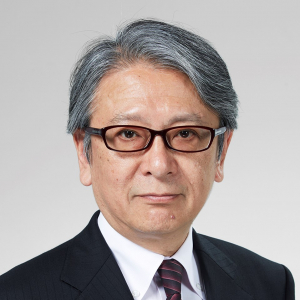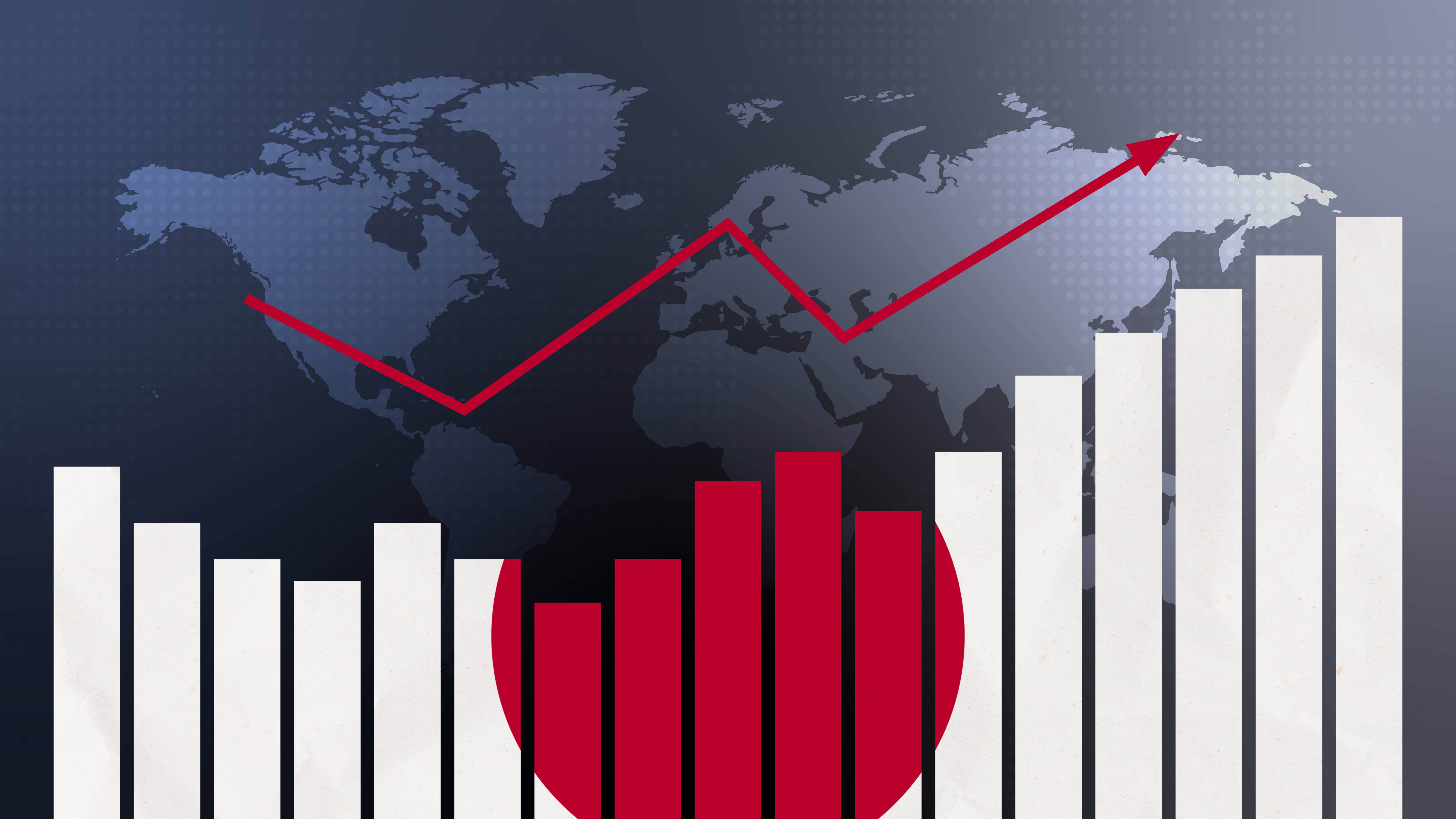
- Article
- Macroeconomics, Economic Policy
Japan and the Lessons of Secular Stagnation
December 1, 2020
Once regarded as a uniquely Japanese malady, the phenomenon of anemic growth amid persistently low inflation and interest rates is now threatening the long-term economic vitality of the developed world as a whole. Hideo Hayakawa discusses economists’ changing views of Japanese-style stagnation and its policy implications.
* * *
In economic and financial circles, the word “Japanification” has been popping up with increasing frequency over the last few years. The usage bespeaks a growing concern that the long-term economic stagnation Japan has experienced is menacing the entire developed world. Of course, economic stagnation is scarcely a recent phenomenon in Japan.[1] What is new is the focus on a pervasive environment of low inflation expectations and rock-bottom interest rates that is rendering monetary policy powerless to stimulate growth.
What Is Japanification?
To be clear, the Japanese economy has not been stuck in neutral over the past two decades. Judged by the standard measures of business activity, it has experienced two extended periods of expansion since the beginning of the millennium: the “Izanami boom,” which went on for more than six years, and the “Abenomics” expansion, which lasted almost as long. But Japan’s economic growth during these cyclic upswings was nothing to shout about.
In the period between October 2012, when Prime Minister Shinzo Abe formed his second cabinet, and the end of 2019 (before the COVID-19 pandemic hit), Japan’s real gross domestic product grew at an average annual rate of just 0.9%. During the same time, the consumer price index, adjusted to exclude the effect of consumption-tax hikes, rose just 0.4% a year on average—an improvement over the previous 14 years, when prices actually fell by 0.3% on average, but a disappointment given the Bank of Japan’s ambitious expansionary program, explicitly aimed at achieving 2% inflation. As for interest rates, the BOJ has consistently held policy rates below 0.5% since 1995, to little avail. Even during cyclic upswings, the Japanese economy has been plagued by slow growth and stagnant prices and wages—the qualities that define “Japanification.”
The concern now is that, since the 2007–8 global financial crisis, the rest of the developed world has been succumbing to the same malady. The first victim would appear to be the euro area. With a double-dip recession resulting from the European sovereign debt crisis of 2010–12, the euro area’s real GDP growth since the financial crisis has averaged little better than 1% (depending on the method of calculation), and the average rise in consumer prices has been down in the same neighborhood. For a short time, about two years back, the European Central Bank seemed ready to terminate its massive quantitative easing program, but with inflation falling short of the “just under 2%” target, it has yet to break free of the zero (or, more accurately, sub-zero) interest rate policy instituted a decade ago. And now, with the economy reeling from the pandemic, the markets are anticipating more QE, not less.
Whether the US economy has succumbed to “Japanification” is less clear. In the period between the Great Recession and the pandemic, GDP was growing at an average annual rate of around 2%—better than in Japan and Europe but still well below the expectations of economists and the market. Inflation, as measured by the PCE (personal consumption expenditures price index)—the preferred indicator of the Federal Reserve Board—consistently fell short of the central bank’s 2% target. Even so, the FRB, citing low unemployment and other factors, raised interest rates nine times between the end of 2015 and the end of 2018, pushing the policy rate to about 2.5% until it was forced to reverse course in 2019. That reversal curtailed its ability to use interest rate cuts to cushion the impact of the pandemic.
The Japanese Perspective
What are the causes of the intractable stagnation seen in Japan and, increasingly, other parts of the industrial world?
In the 1990s, Japanese economists spotlighted problems traceable to the collapse of the 1980s asset-price bubble. Plunging real estate prices in particular left financial institutions with a mountain of nonperforming assets, and because it took the government so long—over a decade—to help the banks dispose of their bad debt, business activity remained sluggish, and the economy’s potential growth rate declined sharply. As a result, Japan lacked the resources to cushion the economy against the impact of the 1997–98 East Asian financial crisis. Deflation took hold shortly thereafter.
What perplexed analysts, however, was the fact that stagnation and deflation persisted even after the disposal of banks’ nonperforming assets under the administration of Prime Minister Jun’ichiro Koizumi (2001–6). Stock prices rebounded, and industrial activity picked up, but economic growth remained anemic. At this point, Japanese economists began shifting their focus from the nonperforming debt problem to structural issues afflicting the real economy, including the aging of the population and the declining competitiveness of Japanese businesses.
In the spring of 2013, the BOJ embarked on a bold, unconventional program of “quantitative and qualitative monetary easing” (QQE) in a bid to jump-start inflation. At the time, the policy was greeted enthusiastically by the financial market. It also got high marks from economists outside of Japan (particularly in the United States). But mainstream Japanese economists were skeptical from the outset. One reason may be that many had already begun to view stagnation as the “new normal,” anticipating the resurrected theory of secular stagnation in the West.
Before long, it became clear that the BOJ’s QQE program, while helping to boost business revenues and reduce unemployment, was doing nothing for wages and prices. Even after unemployment had fallen to less than 3%, with the ratio of job offers to applicants surpassing that seen during the bubble years and serious labor shortages afflicting some sectors, wages remained stagnant, and consumer price increases were minimal. The Phillips curve, which expresses an inverse relationship between unemployment and wages, had flattened. I had begun to harbor concerns on this score as early as 2006–7, when I headed the BOJ’s Research and Statistics Department, but the problem only began to receive widespread attention as the limited impact of Abenomics became apparent.
From Japanese Malady to Secular Stagnation
The views of Western economists have also evolved significantly over the past 25 years, as what was initially viewed as a uniquely Japanese affliction has begun to pervade the entire developed world.
During the 1990s, Western economists, like their Japanese counterparts, tended to blame Japan’s persistent stagnation on the government’s failure to deal decisively with the problem of nonperforming loans. In the wake of the 1997–98 financial crisis, Paul Krugman and other economists stressed the need for aggressive and sustained monetary expansion to pull Japan out of a deflationary spiral.[2] Such calls continued after the Great Recession, particularly in the United States, which was congratulating itself on its timely and decisive disposal of nonperforming bank assets in the wake of the 2007–8 financial crisis. Needless to say, this climate of opinion was a key factor behind the decision of BOJ Governor Haruhiko Kuroda to embark on his QQE experiment in 2013.
The irony is that by this time, it was clear that the United States was experiencing a frustratingly slow recovery, notwithstanding its proactive bank bailout and the FRB’s own bold QE program. Economists began asking themselves whether the problem was rooted deep in the real economy. In autumn of 2013, former US Treasury Secretary Lawrence Summers floated a retooled “theory of secular stagnation,” and soon other economists were weighing in on the issue.
Secular stagnation is not a uniform or simple phenomenon. It has hit some economies harder than others, and a wide range of supply and demand factors have been adduced to explain it. On the supply side, two commonly cited factors are a slowdown in population growth (especially in Japan) and stagnant innovation (in Japan and Europe). On the demand side, some have faulted a trend toward excessive saving (especially in the United States), due partly to the fact that high-tech firms have little need to invest in real assets and partly to the growing concentration of wealth in the hands of the top income earners. Factors such as these, it is suggested, have contributed to a sharp decline in the natural rate of interest, which has robbed monetary policy of its efficacy.
The flattening of the Phillips curve has attracted growing attention in the West, and particularly in the United States, where inflation has remained quite low even with unemployment at its lowest levels in a half century. Scholars have proposed a number of explanations for this, including the idea that labor-saving high-tech automation is holding wages down, or that the growth of the digital marketplace is keeping prices low (the so-called Amazon effect). It will doubtless be some time before a consensus emerges.
A Grim Post-Pandemic Outlook
Meanwhile, the impact of COVID-19 seems likely to accelerate the global trend toward secular stagnation. The most obvious problem is the pandemic’s immediate effect on economic output. The growth projections published by the International Monetary Fund in its October 2020 World Economic Outlook anticipates real GDP growth of –4.3% for the United States, –8.3% for the euro area, and –5.3% for Japan in 2020. The same report tentatively predicts real growth of +3.1%, +5.2%, and +2.3%, respectively, in 2021, which would still leave all three economies below pre-pandemic levels. Moreover, the latest surge in infections could trigger another downturn, especially in Europe.
Where inflation is concerned, the 2% target seems more remote than ever. The coronavirus downturn has already generated a huge output gap in the US, European, and Japanese economies,[3] and there is a strong probability that the recovery, when it comes, will be largely jobless. The FRB has signaled its intent to hold interest rates at zero at least through 2023; judging from long-term rates, the markets are anticipating zero interest for some time to come. All of this adds up to several years Japanese-style stagnation.
More troubling, the productivity shocks from changes wrought by the pandemic, including social distancing and supply-chain reforms, could have a long-term impact on the potential growth rate, as discussed in a previous article. This raises the specter of global stagnation extending over another two or three decades—“Japanification” as the new normal.
Rethinking the Lessons of Japanese-style Stagnation
As we have seen, economists around the world have grown increasingly aware of the dangers of “Japanification” over the past five or six years. The question is whether, equipped with this awareness, central banks and governments are doing what must be done to avoid secular stagnation. In my view, the signs are not encouraging.
In August 2020, the FRB announced two key changes to its monetary policy strategy. First, it shifted its price stability target from 2% to a longer-term average, signaling that it would not raise interest rates even if inflation exceeded 2%, since it had earlier been persistently under 2%. Second, given the flattening of the Phillips curve and the low risk that high employment will trigger runaway inflation, the Fed in effect abandoned its former preemptive tightening policy whenever unemployment fell below its “natural rate.”
While these revisions clarify the FRB’s commitment to monetary easing, they do not reckon with the limits of such a policy. The problem is twofold.
First, with policy interest rates effectively at zero, and the Fed already pumping vast amounts into government bonds, corporate bonds, and various other assets, the central bank has essentially run out of tools to boost inflation. In the current low-inflation environment, simply committing to a higher target will not guarantee higher inflation, as the failure of the BOJ’s QQE program clearly demonstrated. Fed Chairman Jerome Powell’s repeated calls for additional fiscal stimulus bespeak his own acute awareness of the limits of monetary policy.
Second, there is a risk that, over the long term, zero and negative interest rates will create financial imbalances. Indeed, the “anything goes” approach to monetary relaxation embraced by the world’s central banks may have already generated huge asset bubbles.
What, then, of fiscal policy? At present, massive deficit spending is the only thing keeping the world economy afloat amid the COVID-19 pandemic. It is true that fiscal stimulus can buoy the economy even after monetary policy has lost its efficacy. It has unquestionably forestalled bankruptcies and prevented unemployment levels from soaring. But whether it can stave off “Japanification” is a different question altogether. To be sure, economists have previously pointed to the long-term impact of persistent unemployment on potential output, and more recently Lawrence Summers has stressed the role of fiscal policy in addressing secular stagnation. But potential growth can also be compromised by poorly-thought-out government programs, such as those that keep moribund businesses on life support.
In fact, the unprecedented magnitude of fiscal resources mobilized in response to the pandemic around the world may itself be a consequence of “Japanification.” Even before the pandemic hit, there was growing support among economists for deficit spending in the service of fiscal policy. The argument was that, in an environment of persistently low inflation and low interest rates, public debt can climb to very high levels without triggering an inflationary chain reaction.
The idea that deficits are not to be feared in a “Japanified” world helps explain the Japanese government’s own readiness to distribute an across-the-board ¥100,000-per-person cash benefit and the US federal government’s willingness to subsidize unemployment relief at a level exceeding what many of the beneficiaries had been earning as active employees. Such handouts may shore up the economy over the short term, but I seriously question whether they can help with the long-term challenge of boosting potential growth and avoiding the trap of Japanese-style secular stagnation.
[1] The word used previously to describe the country’s post-bubble “lost decade,” though, was “Japanization.”
[2] See Paul Krugman, “It’s Baaack: Japan’s Slump and the Return of the Liquidity Trap,” Brookings Papers on Economic Activity, 1998, No. 2. In a 2015 New York Times piece, Krugman stressed the difference between Japan’s current dilemma and its situation in the 1990s and acknowledged that monetary policy alone is probably insufficient to spur inflation in Japan.
[3] The Statistics Bureau estimates that Japan’s output gap was –10.2% in the April–June quarter of 2020. The BOJ’s more optimistic outlook of –4.83% still represents a substantial demand shortfall.








